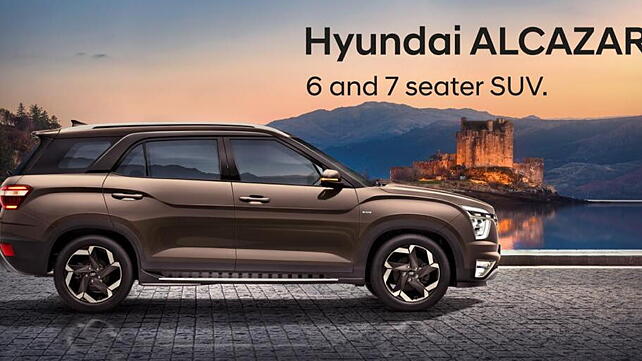
- Available in six-seat and seven-seat layout options
- Believed to be built using 75.6 per cent advanced and high strength steel
The newest SUV from Hyundai, the Alcazar will be available in both six and seven-seat layout options. The company claims that the Hyundai Alcazar harmonises space, premiumness, performance, convenience, safety, and technology. Back in March, the company had revealed the design sketches for the Alcazar and we have also spoken in detail about its technical specifications, to learn more about it, click here. This time around, the company has revealed more details on the feature list.
The six-seat version will offer captain seats in the middle row, while the seven-seat version gets a bench seat. Both the seats get one-touch tip and tumble feature to provide easy access to the third row. Moreover, Hyundai claims that the door opening area has been optimised to offer more head and thigh space for easy ingress and egress to the third row. The third-row seats get the reclining function and are also fully flat foldable for maximum boot space. The Alcazar will also offer side AC vents for the third row with speed control.
Hyundai Alcazar gets ventilated front seats that reduce body temperature faster during humid conditions. The dashboard will be adorned with a large touchscreen infotainment system with Android Auto and Apple CarPlay. The air vents on the first and second rows are placed higher and have a larger volume of airflow to ensure faster cabin cooling. The first row offers an armrest, cup holder, and mobile holder. Additionally, the front door trim gets a bottle holder and a map pocket. Similarly, the second row also offers an armrest with storage, while the third row gets cup holders on both sides. The other feature highlights include a large glovebox, seatback tray, and mobile holder with a net packet. Hyundai claims that the vehicle will also offer a place for the laptop and other valuables.
The Alcazar is believed to have been built using 75.6 per cent advanced and high strength steel. The underbody has been designed to absorb and disperse impact energy, while the ring structure design in the engine room, B-Pillar, and D-Pillar increase rigidity for enhanced handling and stability.

![Hyundai Alcazar [2021-2023] Image Hyundai Alcazar [2021-2023] Image](https://imgd.aeplcdn.com/272x153/n/cw/ec/46812/alcazar-exterior-right-front-three-quarter.jpeg?q=80)
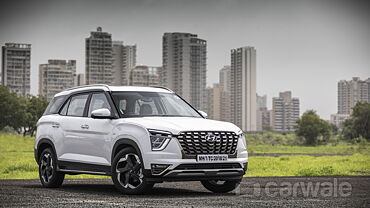
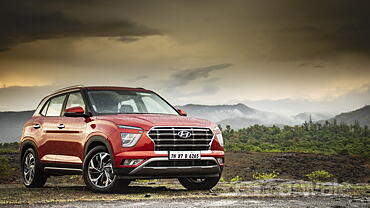
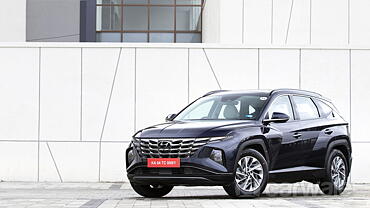
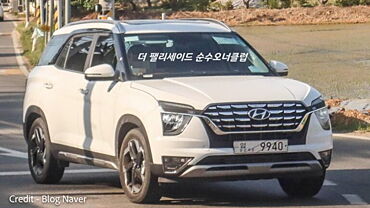






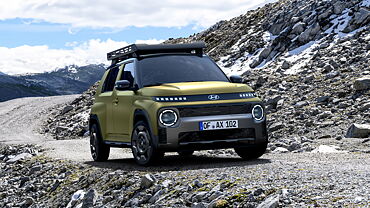

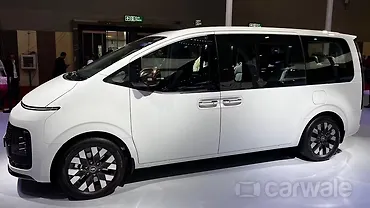


![Hyundai Alcazar [2021-2023] Right Front Three Quarter Hyundai Alcazar [2021-2023] Right Front Three Quarter](https://imgd.aeplcdn.com/199x112/n/cw/ec/46812/alcazar-exterior-right-front-three-quarter.jpeg?q=80)
![Hyundai Alcazar [2021-2023] Right Front Three Quarter Hyundai Alcazar [2021-2023] Right Front Three Quarter](https://imgd.aeplcdn.com/199x112/n/cw/ec/46812/alcazar-exterior-right-front-three-quarter-7.jpeg?q=80)
![Hyundai Alcazar [2021-2023] Right Side View Hyundai Alcazar [2021-2023] Right Side View](https://imgd.aeplcdn.com/199x112/n/cw/ec/46812/alcazar-exterior-right-side-view-2.jpeg?q=80)
![Hyundai Alcazar [2021-2023] Dashboard Hyundai Alcazar [2021-2023] Dashboard](https://imgd.aeplcdn.com/199x112/n/cw/ec/46812/alcazar-interior-dashboard.jpeg?q=80)
![Hyundai Alcazar [2021-2023] Steering Wheel Hyundai Alcazar [2021-2023] Steering Wheel](https://imgd.aeplcdn.com/468x263/n/cw/ec/46812/alcazar-interior-steering-wheel.jpeg?q=80)

























